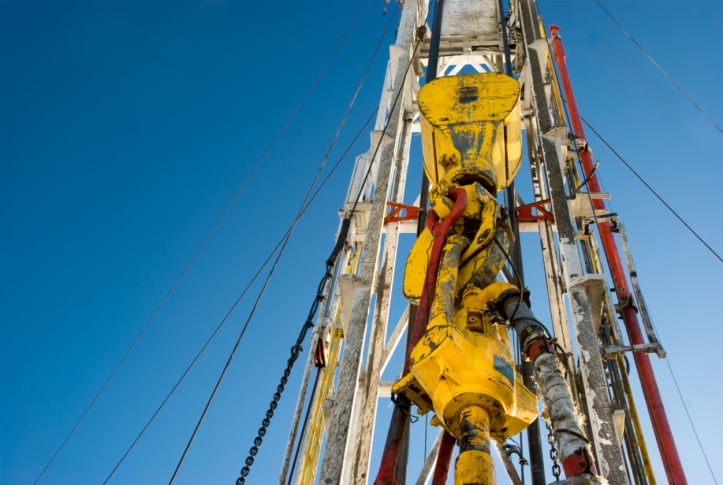
Source: Thinkstock
Production in three major U.S. shale regions — the Bakken, Eagle Ford and Niobrara — also fell between March and April, but net production including the Haynesville, Marcellus, Permian and Utica regions showed net growth of 1,000 barrels a day in April.
The EIA projects that production from the Bakken region of North Dakota and Montana will decline by 23,000 barrels a day in May. The Eagle Ford region of south Texas is projected to produce 33,000 fewer barrels a day and the Niobrara region of Colorado, Wyoming, Nebraska and Kansas is expected to post a production decline of 14,000 barrels a day.
By contrast the Permian Basin of west Texas and New Mexico is expected to add 11,000 barrels a day of production, but that is about half the growth of 21,000 barrels a day posted in April.
ALSO READ: 5 Oil and Gas Stocks Analysts Want You to Buy
Production from legacy wells — those drilled between 12 and 24 months ago — is set to fall to 343,000 barrels a day in May, which is still a record high. New production, however, is forecast to slip from 336,000 barrels a day in April to 286,000 barrels a day in May. This is yet another effect of the drop-off in new drilling.
Since mid-October the U.S. rig count has fallen by more than half, but production has dropped very slowly. We have also noted that the number of wells that have been drilled but not completed could be as high as 3,500. As prices edge toward $60 a barrel, well completions could pick up significantly because services companies will be very competitive on pricing. That could turn production higher again, as well as turn it higher even more quickly than it fell.
The recent rise in crude production has been accompanied (or led) by a rise in demand for crude futures and options from hedge funds and exchange traded funds, and that has also contributed to higher prices. Whether physical demand for oil will follow the financial demand remains to be seen.
The International Energy Agency (IEA) now expects demand will grow by 1.1 million barrels a day in 2015. Meeting that demand will be easy, especially if some of the sanctions on Iran are lifted.
The oil industry and its markets have a lot of moving parts, and it is easy to focus on just a few. But the keyword for today is “volatility.” Or another way of saying it may be to expect the unexpected.
ALSO READ: More Carnage in Oil and Gas Sector Jobs and Spending, but Looking Less Bad
Smart Investors Are Quietly Loading Up on These “Dividend Legends” (Sponsored)
If you want your portfolio to pay you cash like clockwork, it’s time to stop blindly following conventional wisdom like relying on Dividend Aristocrats. There’s a better option, and we want to show you. We’re offering a brand-new report on 2 stocks we believe offer the rare combination of a high dividend yield and significant stock appreciation upside. If you’re tired of feeling one step behind in this market, this free report is a must-read for you.
Click here to download your FREE copy of “2 Dividend Legends to Hold Forever” and start improving your portfolio today.
Thank you for reading! Have some feedback for us?
Contact the 24/7 Wall St. editorial team.


